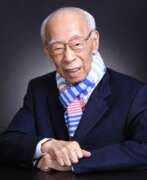Musicologists 21st century


Gastone Biggi was an Italian painter, sculptor, writer, poet, and musicologist.
Biggi combined painting with his activities as an art writer and musicologist. In 1962 his key work The Birth of the Point was published, theorizing the study of the sign module, which he would develop throughout his life. That same year he formed Group 1.
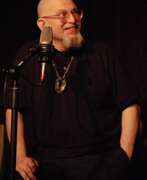

Citizen Kafka, also known as Sid Kafka and The Citizen, is the stage name of Richard Shulberg, a New York radio host and folk musician.
From the late 1970s and throughout the 1990s, Citizen Kafka produced and hosted a number of radio programs on Pacifica Foundation's WBAI-FM in New York City, presenting an eclectic range of live and recorded music, comedy and poetry. One such program was the monthly "Citizen Kafka Show," which Kafka created in 1979 with then-unknown actor John Goodman and musician Kenny Kosek. Along with Pat Conte, he also hosted the program "The Secret Air Museum" on WFMU.
Richard Schulberg was also a violinist and poet, an avid record collector, and the leader of the Wretched Refuse String Band.
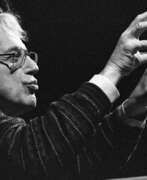

György Ligeti, full name György Sándor Ligeti, was a Hungarian and Austrian composer and musicologist.
Ligeti was born into a Jewish family, but his mother tongue was Hungarian and from an early age he was exposed to Romanian and Hungarian folk music. His first significant work was the Romanian Concerto, which he wrote in 1951. In 1956 Ligeti emigrated from Hungary to Austria, receiving Austrian citizenship in 1968.
In 1957 in Cologne, Ligeti met the experimental composers Karlheinz Stockhausen and Gottfried König and worked with them in the field of academic electronic music, but soon switched to instrumental music. He gained recognition from the Western avant-garde in 1961 with his work Visions and others, in which he used sonorics and the micropolyphony technique he had invented. In 1965 Ligeti completed one of his major works, Requiem.
During his life, Ligeti changed his compositional style and technique several times, ranging from electronic music and sonoricism (1950s and 1960s) to neoromanticism (1980s and 1990s). He has also written many theoretical articles on new currents in music.
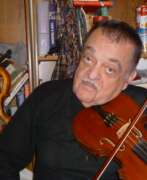

Jovan Mihailović is a Serbian and American musician, artist and writer.
Jovan Mihailović was born and raised in Belgrade, the capital of Serbia, where he and his family survived the Nazi occupation and the transition to communism. From a young age, he demonstrated artistic ability and began to draw, paint and play the violin. He studied at the Belgrade Theater Academy, worked as a playwright in Yugoslavia and traveled throughout Western Europe as a folk musician before immigrating to Sweden, Canada and finally Chicago in 1971.
Jovan was an active member of Chicago's creative community for four decades, writing dozens of novels, plays, and short stories, as well as performing music in restaurants and cafes. He also created many hundreds of drawings and paintings that are full of emotionally intense images from the artist's mystical universe of beauty.
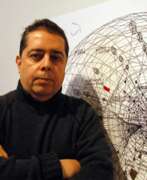

Emanuel Pimenta, full name Emanuel Dimas de Melo Pimenta, is a Brazilian-Portuguese musician, architect, photographer and media artist.
In the late 1970s, Pimenta began working in the synthesis of visual arts, music, architecture, media systems, photography and urbanism. He also developed graphic music notation in virtual environments. The results of his research bridging art and science are presented as works in major museums, foundations and art collections in several countries.
Emanuel Pimenta develops music, architecture and urban projects using virtual reality and cyberspace technologies. His music concerts integrate visual art and have been held in different countries over the last twenty years. In 2016, he completed his third opera entitled Metamorphosis. In 2017, Pimenta was awarded the gold medal of the Paris Academy of Arts, Sciences and Letters. Emanuel Pimenta is also a prolific writer: more than eighty of his books have been published since the 1970s.
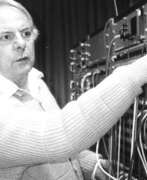

Karlheinz Stockhausen was a German innovative and avant-garde composer, conductor, and musical theorist.
Stockhausen studied at the State Academy of Music in Cologne and the University of Cologne, then in 1952 in Paris with composers Olivier Messiaen and Darius Millau. Returning to Cologne in 1953, he joined the electronic music studio West German Broadcasting (Westdeutscher Rundfunk), of which he was artistic director from 1963 to 1977. Stockhausen created his first electronic music piece in 1953.
In the mid-1950s Stockhausen studied phonetics, acoustics and information theory at the University of Bonn, all of which he used in his musical compositions. From 1953 he began teaching composition in Darmstadt and later organized seminars in Cologne. From 1971 to 1977 he was already professor of composition at the State Academy of Music in Cologne.
Stockhausen used both electronic and traditional instrumentation and supported his approach with rigorous theoretical reasoning and radical innovations in musical notation. He ensured that sounds were equally interesting regardless of the order in which they appeared; random decisions of musical order play an important role in many of his compositions.
Stockhausen lectured and gave concerts with his works throughout Europe and North America. As a creator and theorist of electronic and serial music, he had a significant influence on avant-garde composers of the 1950s and 1980s.
